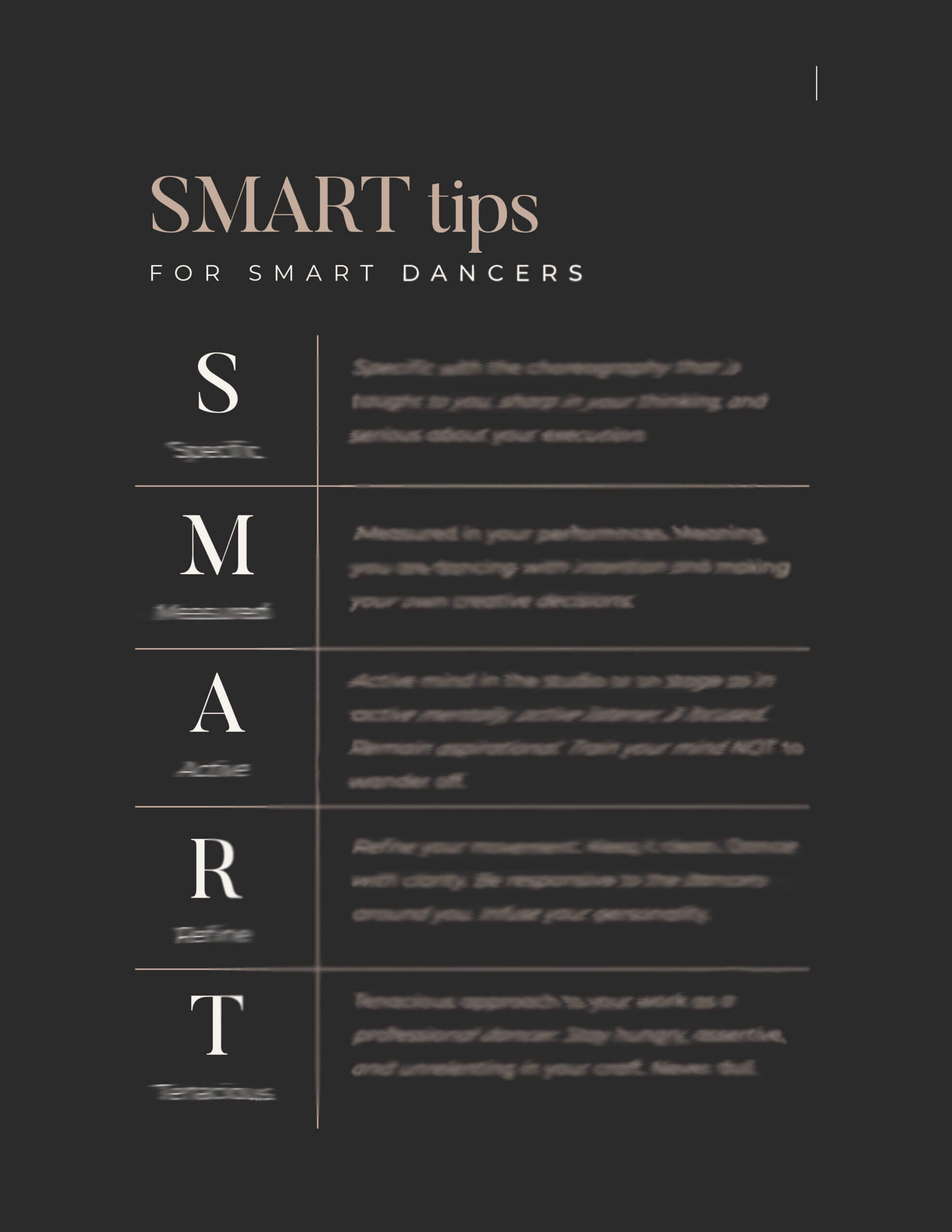So what is this word branding all about, and why is it relevant to my dance career? If it’s so important to dancers, why don’t they teach it in our dance programs, right?
The dance industry is shifting with each new generation that enters this beautiful earth.
The days of training full-time during your schooling and joining a dance company at 18 years old are rare. Dancers are attending universities and colleges to pursue higher education and dual interests. Further, dancers have discovered that as freelancers, they are independent business professionals or entrepreneurs.
From that perspective, I find it essential to provide dancers with the tools and resources they need to address their careers from an entrepreneurial mindset. It starts with branding. However, the concept of branding for dancers or any performers for that matter is not something new. I just systemized it into a formula to give it a much-needed business perspective so dancers can conceptualize what it takes to be a successful dancer, leave a legacy, and gain the performing opportunities they crave.
If you look at any famous dancer throughout the years, there is something signature about their movement and personality. There is something that you can recognize, not just in appearance, but the way they move. Let’s look at Bob Fosse. Bob Fosse undeniably had a famous style. So much so that schools around the world are teaching his “technique.” We understand that his movements have a pedestrian aspect, a comedic approach, and usually tell a story. He played with the music, and often the music and lyrics were a central part of each defining movement in his choreography. You recognize Bob Fosse’s work when you see it. His work is easily identifiable as well as his signature steps. You know his branded movement.
The same applies to dance pioneer Alvin Ailey. If you were to watch all of Mr. Ailey’s ballets, you would find similar movements, shapes, rhythms, and underlying stories of the Black American experience. The dance sequences were beautiful in combination with its significance in the political climate and the powerful music he paired his choreography. That became Mr. Ailey’s brand. In addition to the fact that Mr. Ailey believed dance was for “the people,” all shapes and sizes. And his institution, The Ailey School, has provided dance for people of all ages, sizes, nationalities, and ethnicities worldwide.
What does this mean for you as a dancer in the 21st century?
It means that you can create your signature style as a dancer, personal dancer brand, and persona. You can do this through several methods of branding. You can brand your choreography, or you can impress your style of moving through other people’s work. You can define your dancer’s personality, or you can decide your genre and style of the work you create. Lastly, you can brand the combination of meaningful work, music, and dance sequences. The options are limitless. The primary factor is that you must understand that branded movement enables you to leave a legacy of work for others to view, study, and appreciate for years to come.
The Sonja McCord X teaches branding for dancers. We simplify the process for you to focus on what you love doing the most–creating and performing!
Everything is happening on Instagram.
Please follow us at @thesonjamccordx and join our inner circle @dancervisibility.















Leave a Reply